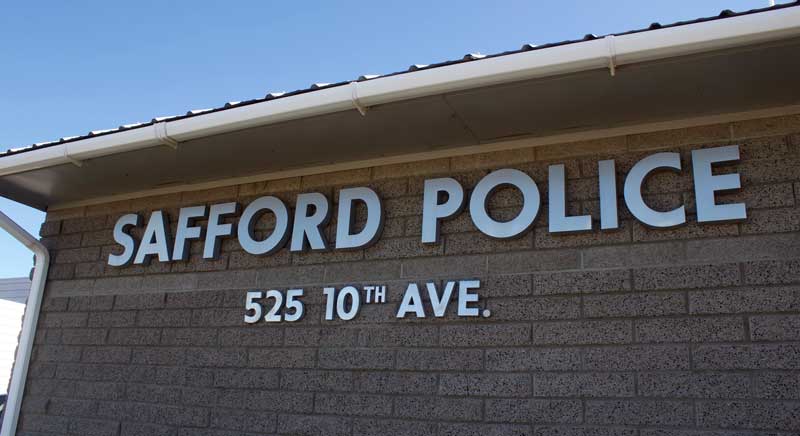ADOT highway development plan to create ‘passive’ mitigation upgrades to better see pedestrians in the area
By Jon Johnson
SAFFORD – The pedestrian in a fatality in the 1200 block of W. U.S. Highway 70 on Thursday, June 28 has been identified as Clarence Nordman, 64.
According to a release from the Safford Police Department, Nordman was crossing from the north side to the south shortly after 8 p.m. when he was struck by a westbound vehicle. The case is still under investigation.
A number of pedestrians have been struck and killed in the area while attempting to cross the highway over the years. The Arizona Department of Transportation (ADOT) will attempt to address the problem by adding more light to the area as part of its $1 million highway development plan, which stretches from 20th Avenue to the 8th Street/Hollywood Road intersection.
Part of the development plan will install brighter LED lights throughout the highway with an astronomy-friendly auto-dimming feature between 11 p.m. and 4 a.m. The lights on the stretch of highway between 11th and 8th Avenue and at intersections will stay bright, however, in an attempt to give drivers better vision of pedestrians attempting to cross the street.
ADOT Safford District Engineer Bill Harmon said the department will use a “passive” system with the lights because the majority of those who have been killed while crossing the street have been under the influence of alcohol or other substances and that a traffic light or lit crosswalk wouldn’t necessarily help because such individuals would probably not utilize the traffic light correctly anyway. He said better lighting will help drivers see pedestrians who don’t necessarily make the best decisions in crossing the street. In Nordman’s case, there has been no indication if he was under the influence of any drugs or alcohol.
“We’ll see how it works,” Harmon said. “Hopefully, it will be a better way of doing things. If the problem gets better, then maybe that’s the trick. If it does not get better, then we’ll go back to the drawing board, do some more head scratching and come up with some other things to help out, but right now we’re just going to give this a try . . .”
“As we explored this pattern of fatalities, what we realized is several of these folks who were killed maybe had a substance abuse issue whether it was drinking or drugs and probably not were able to make the best decisions as a pedestrian,” Harmon said. “So, recognizing that that’s why we are going to more of a passive mitigation improving the lighting so the driver to have a better view of what is going on and when someone is about to step out into traffic, hopefully, it will be ahead of time. ”
Harmon said a signal system is not currently being discussed because, unlike a school crossing where there is a concentration of people crossing at the same time every day, the people crossing the highway in the area vary at different days of the week and different times of the day.
“So, we didn’t think a signal system would work very well,” Harmon said. “That’s why we are going for more of a passive system that helps the driver be more aware and have a better chance of making good driver decisions versus having to rely on the pedestrian to make good pedestrian decisions.”
ADOT’s construction along the highway will likely start in November and take about six months to complete, according to Harmon.







